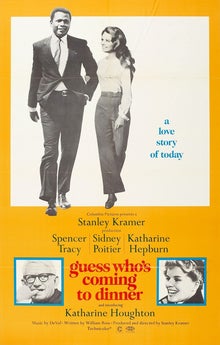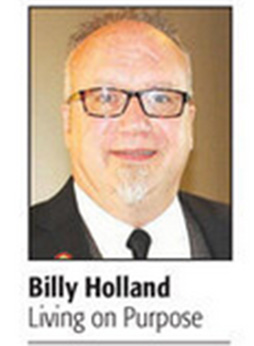Reel Classics: ‘Guess Who’s Coming to Dinner’
Published 4:28 pm Wednesday, February 14, 2024

- (Poster of courtesy of International Movie Data Base)
|
Getting your Trinity Audio player ready...
|
By Ron Kibbey
WinCity Voices
This piece was originally published on WinCity Voices.
Today’s Reel Classic, as you can see from the poster, includes an all-star cast — Spencer Tracy, Sidney Poiter, and Katherine Hepburn. Also starring in her film debut is Katherine Houghton, who is Katherine Hepburn’s niece.
The film is set in San Francisco in 1967. Joanna “Joey” Drayton (Katherine Houghton) is the 23-year-old daughter of a well-to-do liberal couple, Matt and Christina Drayton. Matt (Spencer Tracy) is the editor of a successful newspaper and Christina (Katherine Hepburn) runs an art gallery. Joey is returning to San Francisco after a brief ten-day vacation in Hawaii. She has a major surprise for her parents. While on vacation she met a wonderful man, fell in love and got engaged. Well, guess who’s coming to dinner? She has brought her fiancé to San Francisco to meet her parents. They learn that he is Dr. John Prentice (Sidney Poitier), a 37-year-old widower who is involved with the World Health Organization — and is Black. Their initial reaction is shock that their daughter would be considering marriage to someone of a different race.
Joey has also invited John’s parents (Roy Glenn and Beah Richards) from Southern California to fly up and join the family for dinner. Soon after their arrival, they too learn that their son is planning to marry a white woman and are shocked by the situation. As the film proceeds, there are multiple family discussions. John has confrontations with both Joey’s father and his own father. John’s and Joey’s mothers have conversations. The parents have conversations. A major concern that arises is the fear of the turmoil this couple will endure because of their being of different races. As the day wears on the two mothers come to an agreement to support their children but the fathers continue to be obstinate — both worried about how the decision will impact their child. Joey has also invited an old family friend to the dinner — Monsignor Ryan (Cecil Kellaway). He tries to comfort and support Joey and John.
“Guess Who’s Coming to Dinner” was released in 1967. Interracial couples were not as prevalent as we see today. In fact, when the film was in production, interracial marriage was prohibited by law in a number of states in this country. There is a line in the film where John’s father says to his son “In sixteen or seventeen states you’ll be breaking the law. You’ll be criminals.” This was true. However, by the time the film was released that was no longer true.
On June 12, 1967, the US Supreme Court unanimously ruled in the Loving v. Virginia case that laws prohibiting interracial marriages were unconstitutional. Chief Justice Earl Warren wrote, “Under the American Constitution, the freedom to marry, or not marry, a person of another race resides with the individual and cannot be infringed by the state.” (A side note here — in 2016 an excellent film depicting the circumstances of this court case was released entitled Loving. It is the story of Richard and Mildred Loving, an interracial couple from Virginia who were arrested and jailed for the unlawful crime of loving each other and marrying.)
Another interesting note here is that in 1960, seven years before the release of this film, a black economics student and a white anthropology student met at college in Hawaii, fell in love and married. They had a child who grew up to become President of the United States — Barack Obama.
“Guess Who’s Coming to Dinner” is also the film debut of Isabel Sanford who would later become well known as Louise on the TV show “The Jeffersons.” She became the first African-American woman to win an Emmy for Outstanding Lead Actress in a Comedy Series. In this film she plays Tillie, the maid to the Draytons.
Though the film was popular and well-received, there had been problems in the production. This was Spencer Tracy’s last film, and he was in poor health throughout the making of the film. Reportedly he was suffering from heart disease, diabetes, high blood pressure, respiratory disease, and other health issues. In fact, his health was so questionable that the studio was hesitant to use him. Insurance companies refused to cover him for the studio. There was concern something would happen to him during the film and the studio would have to go back and redo much of the filming.
Katherine Hepburn was adamant that she would not do the movie unless Tracy was in it. She and the producer/director, Stanley Kramer, both put their salaries for the film in escrow as a means of taking the potential burden of extra cost from the studio, and the studio relented. All of his scenes were filmed in the morning to allow adequate time for him to rest. As it turns out, Tracy completed the filming of his scenes but died seventeen days after completion. This film was the ninth in which Spencer Tracy and Katherine Hepburn appeared together. Reportedly, Katherine Hepburn never watched the completed film, stating that the memories of Tracy in the film were too painful for her to bear.
Sidney Poitier said that he was awed and nervous in the presence of Hepburn and Tracy. He said, “When I went to play a scene with Tracy and Hepburn, I couldn’t remember a word. Finally, Stanley Kramer said to me, ‘What are we going to do?’ I said ‘Stanley, send those two people home. I will play the scene against two empty chairs.’ I played the scene in close-up against two empty chairs.”
Though others were considered for the role of Joey Drayton, Katherine Hepburn insisted the the role go to her niece, Katherine Houghton. Others considered for the role were Samantha Eggar and Mariette Hartley.
“Guess Who’s Coming to Dinner” was well-received by critics at the time. The critic for the New York Daily News said it “must be counted as an important contribution to motion pictures. With fearless directness Stanley Kramer takes a fresh and risky topic, inter-racial marriage, deals with it boldly and lets the criticisms fall where they may.”
The New York Times critic called it “a most delightfully acted and gracefully entertaining film . . .” The critic for the Los Angeles Times described it as “a deeply moving film, guaranteed to leave no eye undamp.” Roger Ebert wrote “. . . this film is a joy to see, an evening of superb entertainment.” The Montréal Star described it as “a strong, honest, and remarkably sensitive film dealing with the problem of interracial marriage. Every prejudice and argument for and against such a marriage is examined with candor and often with humor, not in a general, preachy context, but as it relates to the two particular people in question.”
A more current critique found on the Rotten Tomatoes website states, “The film may feel somewhat dated, but the performances and the emotional and socially biting material remain spot on — maybe even more so now.”
“Guess Who’s Coming to Dinner” was deemed a box-office success. It was nominated for ten Academy Awards, including Best Picture and Best Director (Stanley Kramer), Best Actor (Spencer Tracy), Best Actress (Katherine Hepburn), Best Supporting Actor (Cecil Kellaway), Best Supporting Actress (Beah Richards), and Best Screenplay William Rose). Hepburn and Rose won.
“Guess Who’s Coming to Dinner” was first broadcast on TV by CBS in September 1971 and was the highest-rated broadcast of the year. In May 1975, ABC aired a pilot for a proposed comedy based on the film, produced and directed by Stanley Kramer.
A rather loose remake of sorts was released in 2005 as a comedy starring Ashton Kutcher and Bernie Mac. The roles are reversed as the Black parents react when their daughter brings home a young white man. It was called “Guess Who.”
“Guess Who’s Coming to Dinner” was included in the American Film Institute’s 1998 list of Top 100 Greatest American Movies and in their 2002 list of the top 100 America’s Greatest Love Stories. In 2017 it was selected for the National Film Registry for being “culturally, historically or aesthetically significant.”
The Internet Movie Database (IMDb) rates the film at 7.8 of 10. Rotten Tomatoes gives it a critics’ score of 71% and an audience score of 85%.
Information for this Reel Classic review was gathered from Internet Movie Data Base (IMDb), Rotten Tomatoes, Turner Classic Movies (TCM) and Wikipedia.
Ron Kibbey is a retired social worker, community volunteer and film lover.





